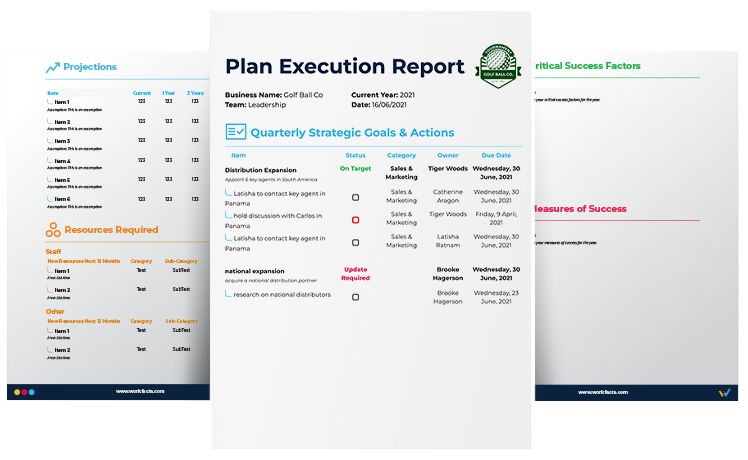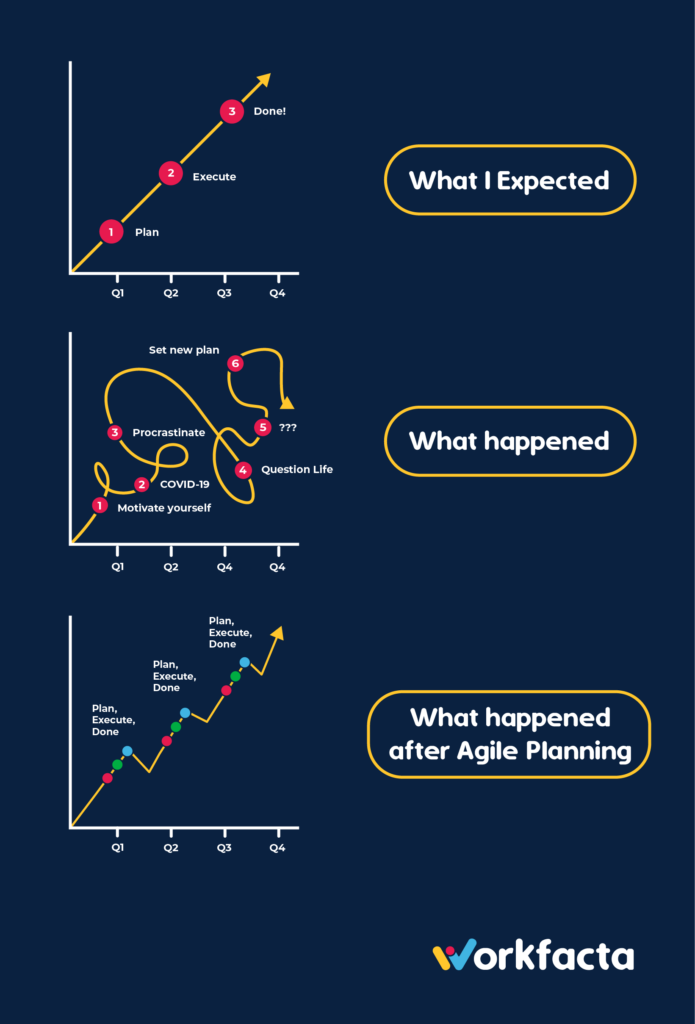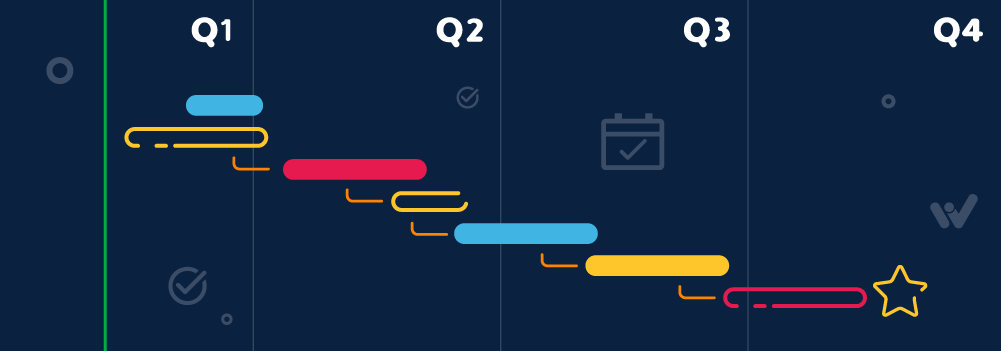
PLANNING | PRODUCTIVITY | TEAM COLLABORATION | COMMUNICATION
How to plan Quarterly Goals in Workfacta
How to plan Quarterly Goals in Workfacta
 Catherine Lethbridge
Catherine Lethbridge
Published 8/02/2022
Businesses with clear plans achieve more: they make goals manageable and know how to design a roadmap to success.
These businesses break their annual goals down to quarterly goals making them less daunting.
By adopting Workfacta as your Planning tool, you too will be able to make these plans approachable, trackable, measurable and easy to follow while adapting to changes.
Workfacta’s Annual and Quarterly Planning features allow you to optimise your planning. Read on to find out the difference between annual and quarterly planning, why both are important and how Workfacta can streamline these processes for you.
. . .
The difference between Annual Planning and Quarterly Planning
Big thinking precedes achievements.
Your Annual Planning is held once a year, usually at the end of your fiscal year. It sets the strategic direction of the company and the specific business goals over the next 12 months.
For example:
Your fiscal year starts in July or January. Your Annual Plan is to acquire a new company overseas by 31st December.
Your Quarterly Plan is your Annual Plan broken down into three-month periods plan that ends on the last day of the third month. Many businesses use “Q1, Q2, Q3, Q4” for quicker reference to their Quarter.
For example:
If your fiscal year starts in January, your quarters would be Q1 January-March, Q2 April-June, Q3 July-September, Q4 October-December.
In terms of goals, your plan to acquire a new company might look like this:
- Q1, you identify the company to acquire
- Q2, you undertake your Merger & Acquisition due diligence
- Q3, you make contact and undertake negotiations
- Q4, you make an offer and close the deal
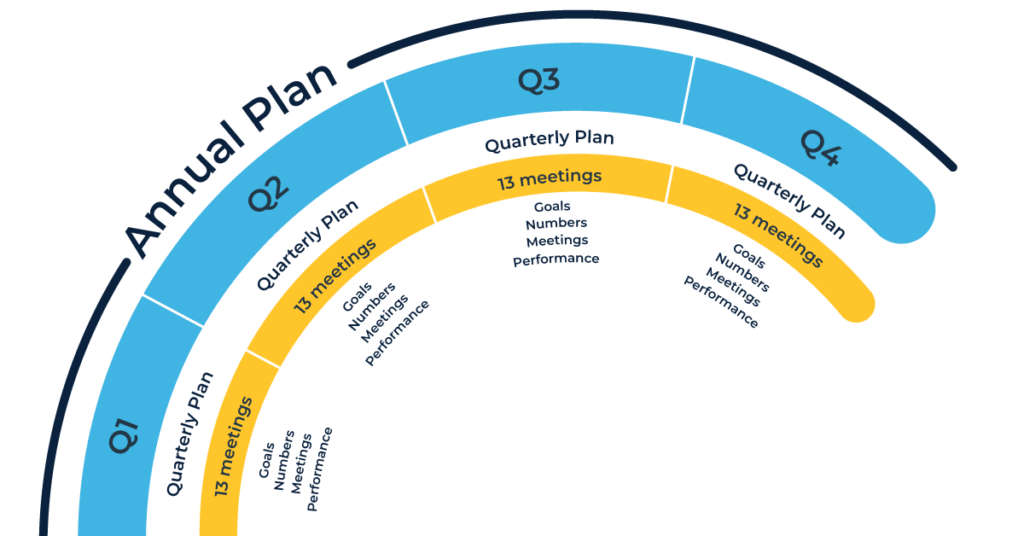
Annual and Quarterly plans in Workfacta
. . .
Why is Annual Planning important?
Without a plan, there is no path to achieve your goals.
The Annual Planning session connects the broader vision of the company (3-5 year plans) to the specific goals your organisation has set to meet its targets. The Annual Plan will define the critical milestones your teams must meet in the next 12 months at the operational level.
In Workfacta, you can use the Annual Planning feature to record the key information that makes up the plan, such as:
- Projections (forecast of your plan over 3-5 years and financials)
- Foundation principles (vision, mission, purpose, critical success factors)
- Specific business goals (using the KPIs, SMART or OKR frameworks)
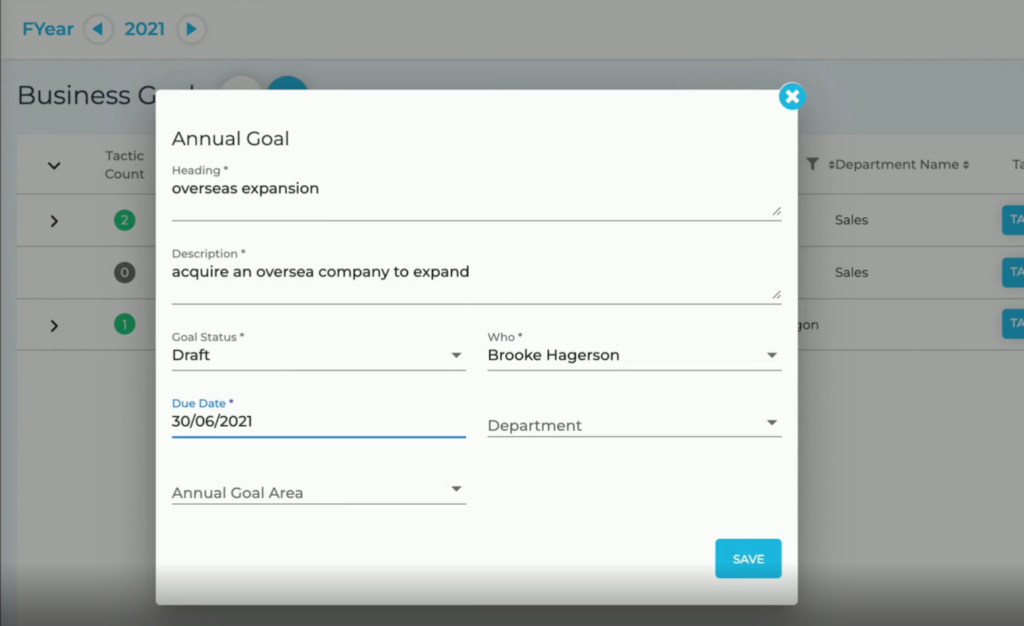
Setting up an Annual Goal in Workfacta
. . .
Why should you break down the Annual Plan into Quarterly Plans?
A good plan is one that you can follow.
A Quarterly Plan breaks the Annual Plan into a 90-day period to keep the goals manageable. Breaking down your Annual Goals into Quarterly Goals also keeps your team Agile and Adaptive if your environment changes.
For example:
You had planned to acquire an overseas company to expand. Because of the COVID pandemic, you had to slow your overseas expansion plans, so your quarterly goals refocus on expanding nationally.
In Workfacta, you can use the Quarterly Planning feature to record the roadmap to achieve your Annual Plan.
In the Quarterly Plan, you will include:
- Operational goals
- Tactics or Actions to achieve the operational goals
- Roles and responsibilities, such as who reports on the progress of the goal (owner) and who handles the execution of each action
- Numbers, such as the metrics you will use to measure the progress of the goal or health of the business
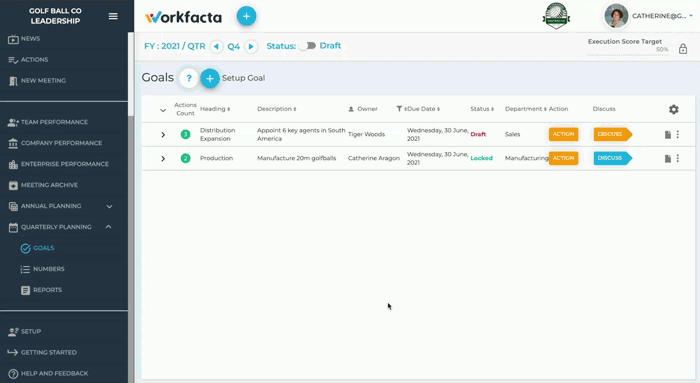
Making Quarterly Goals in Workfacta
. . .
How to keep track of your Quarterly Goals?
You can’t manage what you don’t measure.
To evaluate how you are progressing in your execution plan, you need to create a review routine to revisit and reassess the plan’s success. Adopting a disciplined approach to measuring your progress includes: reviewing your goals as a team, evaluating the results, discussing and problem-solving.
In Workfacta, you can schedule regular meetings (best practice is once a week) to review:
- the status of the goals
- the numbers that you are monitoring
- reports
- discuss any opportunities, challenges or general discussion items
- problem-solve
The key benefit of a Workfacta Meeting is its unique approach to problem-solving: the Platform systemises the business review session by integrating a built-in agenda and disciplined workflow. This systemisation of the meeting process removes unnecessary distractions, making each meeting productive, efficient and impactful.
To know more about Workfacta Structured Meetings, read this article.
The Numbers feature lets you see only the metrics that matter. One person is accountable to update these metrics before the weekly meeting. This way, you are not drowning in data. You just keep track of the metrics that help you make decisions.
The Discussion feature lets you and your team record opportunities, challenges and other items that you deem important to solve collectively. The team members can record these discussions on the Platform anytime during the week. The item will be automatically added to the next meeting agenda. There is no need to circulate an agenda via email, share a document or rely on your memory to bring up an item for discussion: Workfacta does this for you.

Workfacta’s meeting workflow
. . .
The Execution Report: an up-to-date summary of your quarterly goals, tactics and deadlines
Execution is the key to success.
An execution report is a management tool that allows you to track the status of your goals, who’s accountable for each goal and the deadline for each outcome.
In Workfacta, the execution report is a sub-section of the Annual Planning menu. The execution report is the high-level summary of all your quarterly goals, including:
- The goal status (on target, off-target, in progress, overdue or complete)
- The owner of the goal (the person accountable for the outcome)
- The deadline for completion
The key benefit of this execution report lies in its up-to-date status. At any time, the team leader can see the status and progress of all the actions associated with the goals. The Platform updates the execution report as soon as the status is updated by one of the team members.
You can also go back to previous quarters and keep a concise history of your goals Quarter by Quarter.
This way, you will track key activities and identify areas that require attention. These execution reports can be shared amongst your team members to maintain visibility across the company.
For example:
One of your goals is tracking as off-target, you meet with the owner of the goal to discuss if the goal needs to be adapted or if there are other ways to resolve the issue. Workfacta gives you a clear picture of what is and isn’t working and who is accountable, so you can keep your goals on track.
